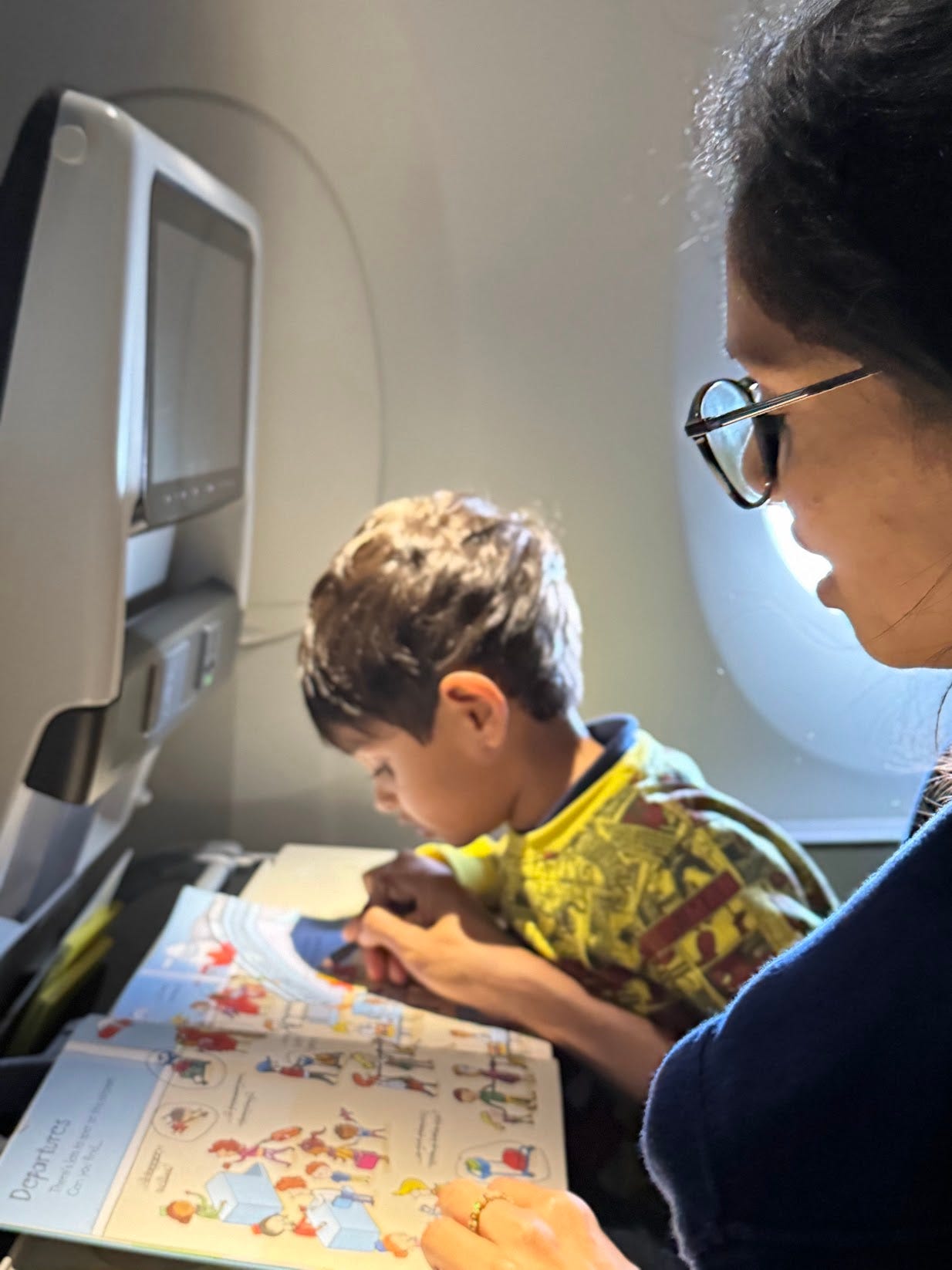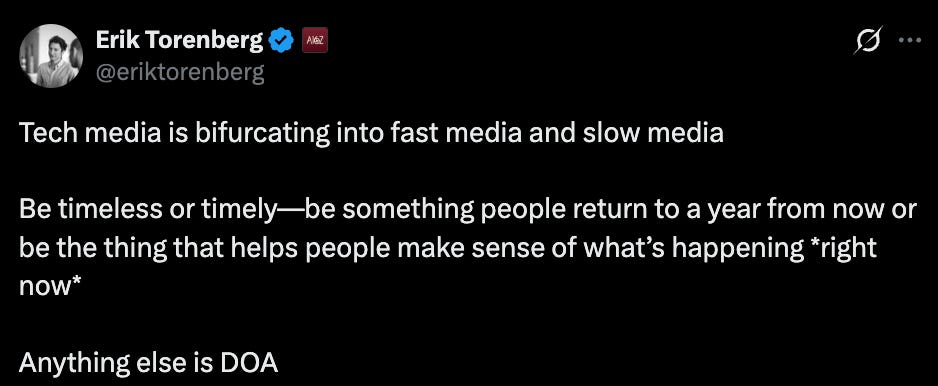After a whirlwind 2.5 weeks in India, I'm back in San Francisco. I also survived two 21-hour flights (with a 3-year-old). I read books, stared at the safety video until I could recite it, watched a movie or four, and obsessively tracked our tiny plane icon across the map (don’t tell me you haven’t done that!)
When I got home, jet-lagged, I casually asked my husband if he wanted to watch something. But even before I suggested it I realized both of us couldn't even look at a screen. But guess what? I could still pick up a book.
Why did I feel this way? I look at a screen for work, for play (and I also read on my phone). But this feeling was my brain telling me something important about the future of content. And as marketers, we better listen.
What comes after video?
I think we can all agree that we're living in a world where video is at its peak. TikTok. YouTube Shorts. Instagram Reels. LinkedIn video posts (wasn't on my bingo card but here we are). Everyone's fighting for those precious seconds of attention with flashy cuts and trending sounds. It feels like we're about to hit a wall.
AI is about to flood the market with perfect videos. That perfect ad, the perfect ASMR video, the perfect street style interviews. Veo can already create Hollywood-quality clips from text prompts. In 18 months, every brand will have access to AI that can pump out engaging video content at scale.
Your competitor's AI will make videos just as good as yours. Maybe better. And they'll make thousands of them. So where do humans fit in? For me, the answer is in that post-flight moment when I couldn't bear to look at another screen but still wanted to read a book.
We'll go back to craving the things only humans can give us: depth, perspective, and the luxury of going slow.
When everything is optimized for quick hits and viral moments, the rare long-form piece that lets you think becomes so precious. When every video is perfectly edited for maximum engagement, the thoughtful essay that doesn't try to manipulate your attention becomes a refuge.
The coming content divide
We're heading toward a two-tier content world:
Ultra-Fast, AI-Optimized Content
Breaking news, hot takes, viral moments
Perfect thumbnails and hooks generated at scale
Helps people make sense of right here and right now
High volume, short lifespan (sometimes less than a few hours)
Timeless, Human-Crafted Deep Dives
Thoughtful perspectives only humans can provide
Content people return to months or years later
Builds genuine connection and trust
Low volume, long lifespan
The middle ground gets wiped out by AI.
How content will evolve
Stage 1: Human-AI Collaboration (today) - Humans create content, AI assists with optimization and distribution.
Stage 2: AI Content Explosion (next 2-3 years) - AI creates content, humans assist with curation and quality control. Humans still consume it.
Stage 3: The Great Sorting (next 5-7 years?) - AI creates content for other AI systems and humans prefer human-made content.
And the return of neutral legacy media
As we move through these stages, we're going to see the unexpected resurrection of neutral, fact-based journalism. Every piece of content right now is designed to trigger maximum engagement through outrage or controversy, so straightforward reporting will feel like a spa day for our minds.
Sooo…how should *you* think about content?
Most marketers rightfully obsess over the fast lane. You chase viral moments, optimize for engagement, and measure success in impressions and clicks.
The slow lane is where brands are actually built. It's where trust develops, where expertise gets established, where people form the kind of connection that turns them into customers. Think about the brands and people you actually trust. They probably have both: the timely communications that keep them relevant, and the deeper takes that made you respect their point of view in the first place.
TL;DR - Stop trying to make everything viral. Some ideas deserve the space to breathe, to develop, to be absorbed slowly. That's how some of the best things are made.
The Split
Fast content: React to trends, share hot takes, join conversations happening right now. Video-first, and videos, fast.
Slow content: Build your thesis, establish expertise, create the foundational pieces people return to. Here's what this looks like practically:
Invest in formats that can't be replicated by AI. Your unique perspective, your industry insights, your personal experience can't be prompt-engineered.
Create content that respects attention instead of stealing it. Long-form newsletters, thoughtful blog posts, even well-crafted email sequences that unfold over time.
Think like a publisher. Publishers understand that some content is meant to deeply connect with hundreds of the right people, not reach millions.
For the AI tier: Use it for speed and scale. Breaking news responses, product announcements, social media reactions, video clips. Accept that this content is disposable.
For the human tier: Invest in voices and stories only your brand can tell. Create content that gets better with time, not worse.
The brands that understand this divide early will own their categories. The future is about making better videos and understanding when to make videos at all.
(just like I reached for that book after 17 hours of screens).
Until next time,
Shrikala





